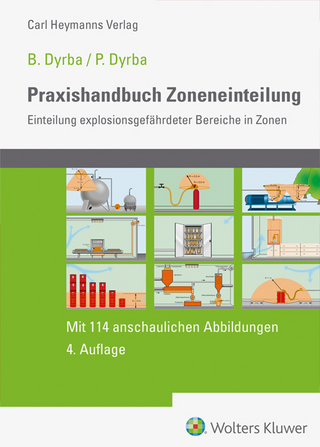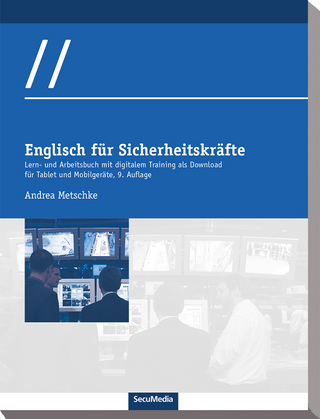
Nanocharacterisation
Royal Society of Chemistry (Verlag)
978-0-85404-241-8 (ISBN)
- Lieferbar (Termin unbekannt)
- Versandkostenfrei innerhalb Deutschlands
- Auch auf Rechnung
- Verfügbarkeit in der Filiale vor Ort prüfen
- Artikel merken
Chemical characterisation techniques have been essential tools in underpinning the explosion in nanotechnology in recent years and nanocharacterisation is a rapidly developing field. Contributions in this book from leading teams across the globe provide an overview of the different microscopic techniques now in regular use for the characterisation of nanostructures. Essentially a handbook to all working in the field this indispensable resource provides a survey of microscopy based techniques with experimental procedures and extensive examples of state of the art characterisation methods including, Transmission Electron Microscopy, Electron Tomography, Tunneling Microscopy, Electron Holography, Electron Energy Loss Spectroscopy This timely publication will appeal to academics, professionals and anyone working fields related to the research and development of nanocharacterisation and nanotechnology.
A I Kirkland is Professor of Materials at Oxford University and the author of over 170 refereed papers. He was awarded "best materials paper" of 2005 by the Microscopy Society of America. Since 2000 he has also been involved in the characterisation of CCD cameras for TEM. His most recent work involves the development of approaches to complex phase extension and diffractive imaging to further improve resolution. J Hutchinson is a Reader in Materials at Oxford University and has published over 300 refereed papers during his career.. He is currently Vice-President of the Royal Microscopical Society (President 2002-2004), and from 2000-2004 was also a member of the Executive Board of the European Microscopy Society. He has also been involved in the development of the world's first double-aberration-corrected electron microscope.
Chapter 1: Characterization of Nanomaterials using Transmission Electron Microscopy;
1.1 Introduction;
1.2 Imaging;
1.2.1 Transmission Electron Microscopy;
1.2.2 High-resolution electron Microscopy;
1.2.3 Basis of High-resolution Imaging;
1.2.4 Resolution Limits;
1.2.5 Lattice Imaging or Atomic Imaging;
1.2.6 Instrumental Parameters;
1.3 Survey of Applications;
1.3.1 Developments in HREM;
1.3.2 Small Particles and Precipitates;
1.3.3 Two-dimensional Objects;
1.3.4 One-dimensional Objects;
1.3.5 Zero-dimensional Objects;
1.3.6 Surfaces and Interfaces;
1.4 Emerging Trends and Practical Concerns;
1.4.1 Atomic Location and Quantitative Imaging;
1.4.2 Detection and Correction of Aberrations;
1.4.3 Stobbs' Factor;
1.4.4 Radiation Damage;
1.5 Conclusions;
Acknowledgements;
References;
Chapter 2: Scanning Transmission Electron Microscopy;
2.1 Introduction;
2.1.1 Basic Description;
2.1.2 Detectors;
2.1.3 Electron Energy-loss Spectroscopy;
2.2 Aberration-corrected STEM;
2.2.1 The Aberration Function;
2.2.2 Spherical and Chromatic Aberration;
2.2.3 Aberration Correctors;
2.2.4 What Do We See in a STEM?;
2.2.5 Measuring Aberrations;
2.2.6 Phonons;
2.2.7 Resolution;
2.2.8 Three-dimensional Microscopy;
2.2.9 Channeling;
2.3 Applications to Nanostructure Characterisation in Catalysis;
2.3.1 Anomalous Pt-Pt Distances in the Pt/alumina Catalytic Systems;
2.3.2 La Stabilisation of Catalytic Supports;
2.3.3 CO Oxidation by Supported Noble-metal Nanoparticles;
2.4 Summary and Outlook;
Acknowledgements;
References;
Chapter 3: Scanning Tunneling Microscopy of Surfaces and Nanostructures;
3.1 History of the STM;
3.2 The Tunneling Interaction and Basic Operating Principles of STM;
3.3 Atomic-resolution Imaging of Surface Reconstructions;
3.4 Imaging of Surface Nanostructures;
3.5 Manipulation of Adsorbed Atoms and Molecules;
3.6 Influence of the Surface Electronic States on STM Images;
3.7 Tunneling Spectroscopy;
3.8 Tip Artefacts in STM Imaging;
3.9 Conclusions;
References;
Chapter 4: Electron Energy-loss Spectroscopy and Energy Dispersive X-ray Analysis;
4.1 What is Nanoanalysis?;
4.2 Nanoanalysis in the Electron Microscope;
4.2.1 General Instrumentation;
4.3 X-ray Analysis in the TEM;
4.3.1 Basics of X-ray Analysis;
4.3.2 Analysis and Quantification of X-ray Emission Spectra;
4.3.3 Application to the Analysis of Nanometre Volumes in the S/TEM;
4.3.4 Related Photon Emission Techniques in the TEM;
4.4 Basics of EELS;
4.4.1 Instrumentation for EELS;
4.4.2 Basics of the EEL Spectrum;
4.4.3 Quantification of EELS - The Determination of Chemical Composition;
4.4.4 Determination of Electronic Structure and Bonding;
4.4.5 Application to the Analysis of Nanometre Volumes in the S/TEM;
4.5 EELS Imaging;
4.6 Radiation Damage;
4.7 Emerging Techniques;
4.8 Conclusions;
References;
Chapter 5: Electron Holography of Nanostructured Materials;
5.1.1 Basis of Off-axis Electron Holography;
5.1.2 Experimental Considerations;
5.2 The Mean Inner Potential Contribution to the Phase Shift;
5.3 Measurement of Magnetic Fields;
5.3.1 Early Experiments;
5.3.2 Experiments Involving Digital Acquisition and Analysis;
5.4 Measurement of Electrostatic Fields;
5.4.1 Electrically Biased Nanowires;
5.4.2 Dopant Potentials in Semiconductors;
5.4.3 Space-charge Layers at Grain Boundaries;
5.5 High resolution Electron Holography;
5.6 Alternative Forms of Electron Holography;
5.7 Discussion, Prospects for the Future and Conclusions;
Acknowledgements;
References;
Chapter 6: Electron Tomography;
6.1 Introduction ;
6.2 Theory of Electron Tomography;
6.2.1 From Projection to Reconstruction;
6.2.2 Backprojection: Real-space Reconstruction;
6.2.3 Constrained Reconstructions;
6.2.4 Reconstruction Resolution;
6.2.5 Measuring Reconstruction Resolution;
6.2.6 The Projection Requirement;
6.3 Acquiring Tilt Series;
6.3.1 Instrumental Considerations;
6.3.2 Specimen Support and Positioning;
6.3.3 Specimen Considerations;
6.4 Alignment of Tilt Series;
6.4.1 Alignment by Tracking of Fiducial Markers;
6.4.2 Alignment by Crosscorrelation;
6.4.3 Rotational Alignment without Fiducial Markers;
6.4.4 Other Markerless Alignment Techniques;
6.5 Visualisation, Segmentation and Data Mining;
6.5.1 Visualisation Techniques;
6.5.2 Volume Rendering;
6.5.3 Segmentation;
6.5.4 Quantitative Analysis;
6.6 Imaging Modes;
6.6.1 Bright-field TEM;
6.6.2 Dark-field (DF) Tomography;
6.6.3 HAADF STEM;
6.6.4 Meeting the Projection Requirement;
6.6.5 Experimental Considerations;
6.6.6 Limitations;
6.6.7 Core-loss (Chemical Mapping) EFTEM;
6.6.8 Low-loss EFTEM;
6.6.9 Energy Dispersive X-ray (EDX) Mapping;
6.6.10 Holographic Tomography;
6.7 New Techniques;
6.7.1 Electron Energy-loss Spectroscopy (EELS) Spectrum Imaging;
6.7.2 Confocal STEM;
6.7.3 Atomistic Tomography;
6.8 Conclusions;
References;
Chapter 7: In-situ Environmental (Scanning) Transmission Electron Microscopy;
7.1 Introduction;
7.2 Background;
7.3 Recent Advances in Atomic-resolution In-situ ETEM;
7.4 Impact of the Atomic-resolution In-situ ETEM and Global Applications;
7.5 Applications of Atomic-resolution In-situ ETEM in the Studies of Gas-Catalyst and Liquid-Catalyst Reactions;
7.5.1 Liquid-phase Hydrogenation and Polymerisation Reactions;
7.5.2 Development of Nanocatalysts for Novel Hydrogenation Chemistry and Dynamic Imaging of Desorbed Organic Products in Liquid-phase Reactions;
7.5.3 Butane Oxidation Technology;
7.5.4 In-situ Observations of Carbon Nanotubes (CNTs) in Chemical and Thermal Environments;
7.6 Conclusions;
Acknowledgements;
References;
Subject Index;
| Erscheint lt. Verlag | 31.8.2007 |
|---|---|
| Reihe/Serie | Nanoscience & Nanotechnology Series ; Volume 3 |
| Verlagsort | Cambridge |
| Sprache | englisch |
| Maße | 156 x 234 mm |
| Gewicht | 656 g |
| Themenwelt | Technik |
| ISBN-10 | 0-85404-241-5 / 0854042415 |
| ISBN-13 | 978-0-85404-241-8 / 9780854042418 |
| Zustand | Neuware |
| Informationen gemäß Produktsicherheitsverordnung (GPSR) | |
| Haben Sie eine Frage zum Produkt? |
aus dem Bereich


